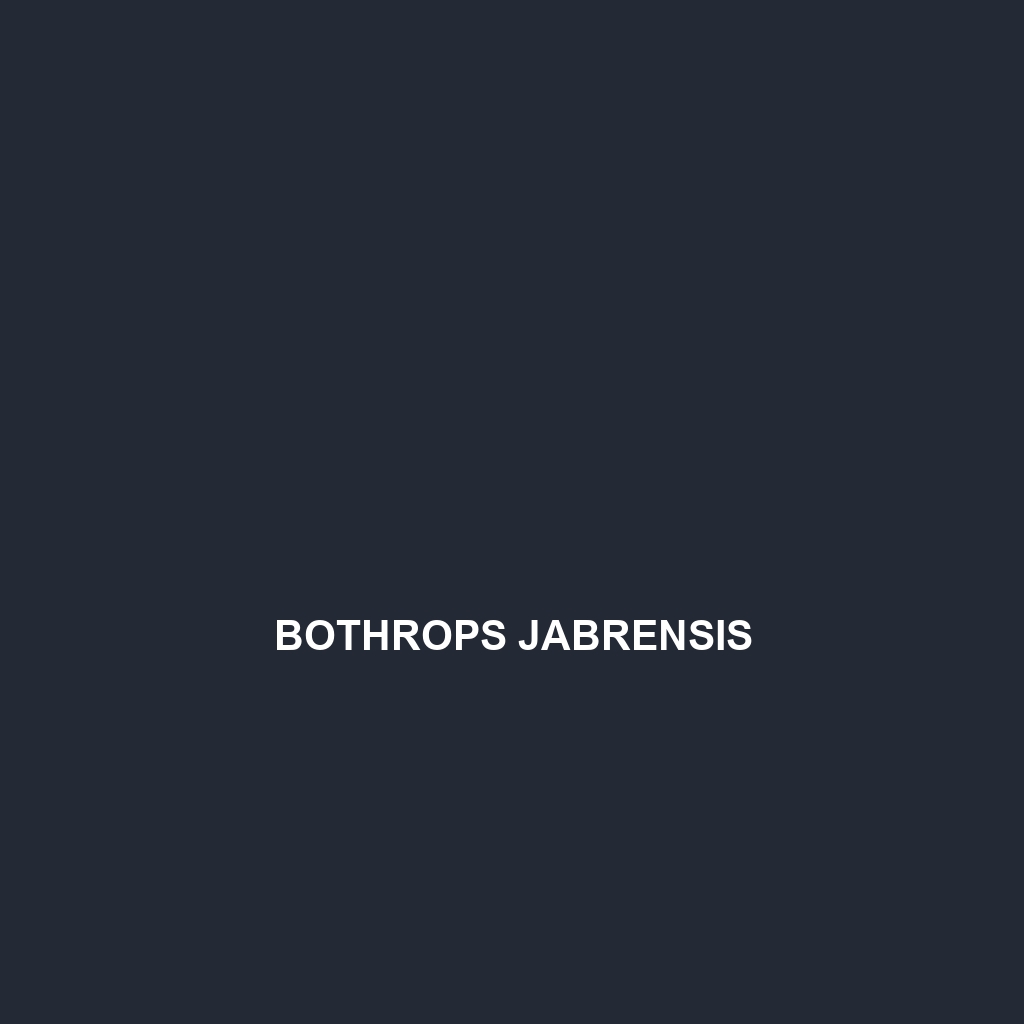Bothrops jabrensis: An Overview of the Jabrensis Pit Viper
Common Name: Bothrops jabrensis
Scientific Name: Bothrops jabrensis
Habitat
Bothrops jabrensis, commonly known as the Jabrensis pit viper, is primarily found in the tropical rainforests and montane regions of South America, specifically in parts of Venezuela and Colombia. These snakes thrive in humid environments, typically residing in leaf litter, crevices, and among rocks, making them well-adapted to their lush, verdant surroundings.
Physical Characteristics
The Jabrensis pit viper can grow to an impressive length of up to 1.5 meters (approximately 5 feet). Its coloration is predominantly a striking green or yellowish hue, adorned with dark brown or black bands, providing excellent camouflage within its natural habitat. The snake exhibits a robust body shape, characterized by a triangular head and distinct heat-sensing pits located between the eyes and nostrils, which help in locating warm-blooded prey.
Behavior
Bothrops jabrensis displays primarily nocturnal behavior, becoming active during the night to hunt and thermoregulate. This species is known for its ambush hunting strategy, often waiting motionless in foliage or on the ground for unsuspecting prey to pass by. When threatened, the Jabrensis pit viper may flatten its body and hiss, showcasing its readiness to defend itself.
Diet
The diet of Bothrops jabrensis consists mainly of small mammals, birds, and amphibians. Utilizing its potent venom, this snake immobilizes its prey before swallowing it whole. Its feeding habits are adjusted based on the availability of food sources within its habitat, and it exhibits a preference for smaller rodents and lizards.
Reproduction
Bothrops jabrensis is ovoviviparous, giving birth to live young rather than laying eggs. The breeding season typically occurs during the rainy months, with females producing litters that can range from 5 to 20 offspring. Notably, the females provide no parental care after giving birth, and the young snakes are fully independent immediately after birth.
Conservation Status
Currently, Bothrops jabrensis is classified as *Vulnerable* on the IUCN Red List due to habitat loss and degradation caused by human activities such as deforestation and urban expansion. Conservation efforts are essential to preserve its natural habitats and improve its chances of survival in the wild.
Interesting Facts
1. Bothrops jabrensis possesses a highly effective venom, which it uses not only for hunting but also for self-defense.
2. This species is part of the Larger Bothrops genus, which includes some of the most well-known venomous snakes in the Americas.
3. The coloration of Bothrops jabrensis can vary significantly depending on its geographical location, ranges from bright greens to darker browns.
Role in Ecosystem
Bothrops jabrensis plays a vital role in its ecosystem as both predator and prey. By controlling rodent populations, it helps maintain ecological balance. Additionally, as a food source for larger predators, it contributes to the complex food web in its tropical rainforest habitat. Protecting this species is crucial not just for its survival but for maintaining the health of the ecosystems it inhabits.
